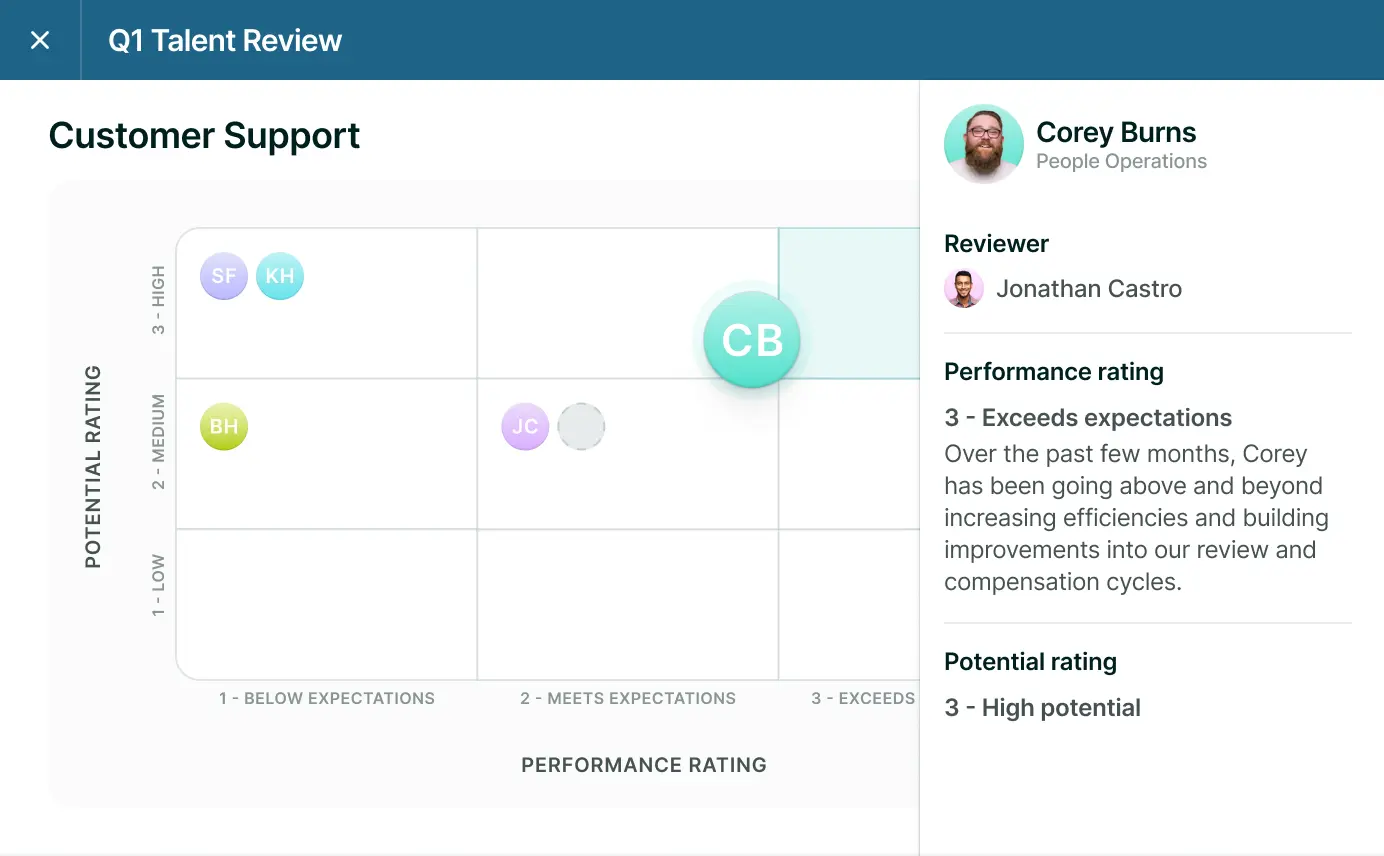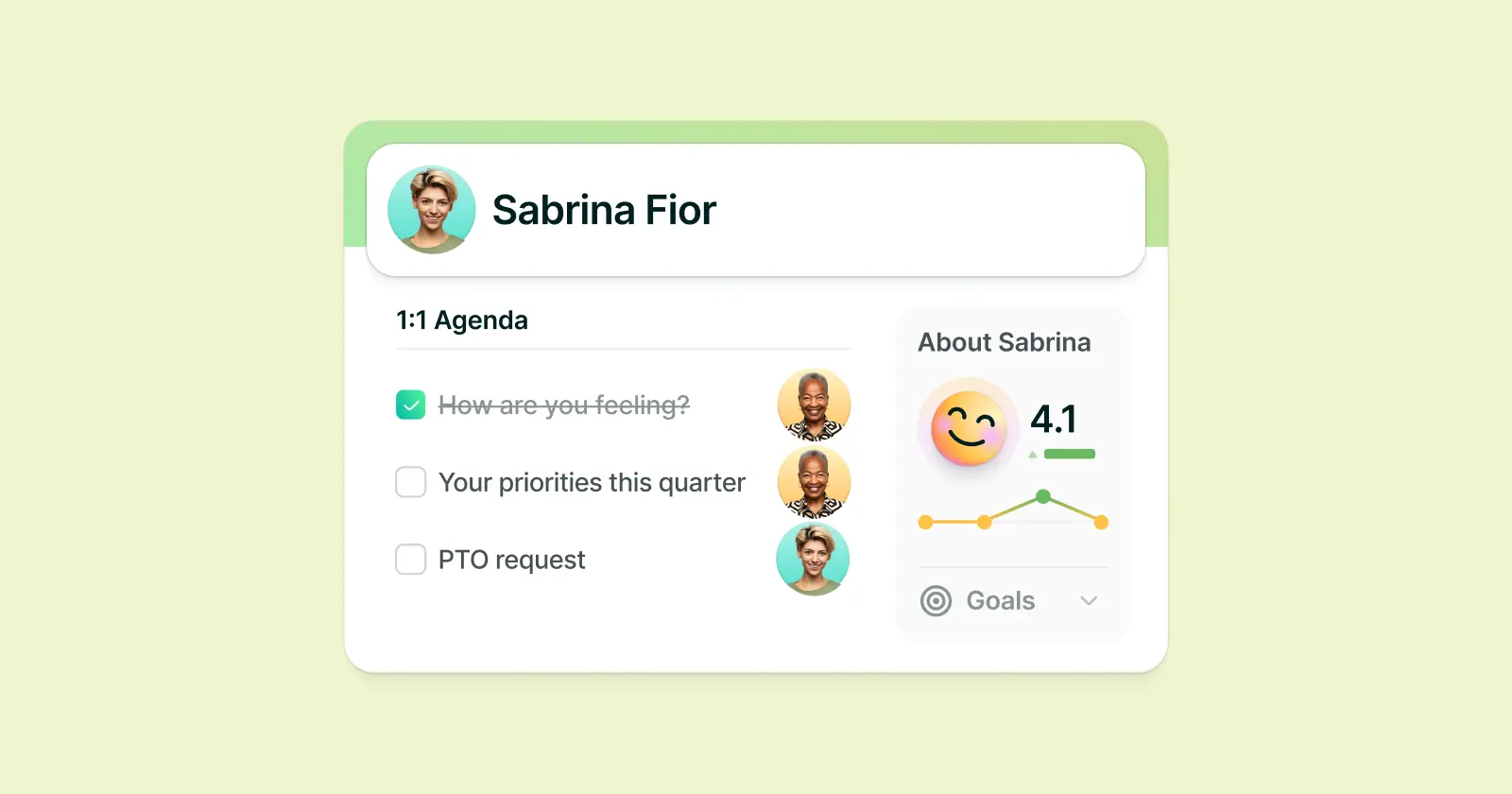Asynchronous work might have started as a nice-to-have experiment. But for many organizations, it’s now a critical element of employee productivity, equity, and wellbeing. That’s because when done right, it gives people the freedom to work when they’re at their best, boosting performance and engagement while decreasing the risk of burnout.
Unlocking these benefits and keeping async work sustainable requires an intentional approach — one where leaders model the behavior they expect from their people, embrace the traits of high-performing teams, take proactive steps to avoid common pitfalls, and use the right tools.
Why Async Work Matters in the Modern Workplace
Asynchronous work means that employees work on their own time without the expectation of being online or responsive during certain windows. Although asynchronous companies still have deadlines and may set guidelines for general response timeframes, employees are given the freedom to work during the hours that suit them best. It’s this freedom that makes async work a natural fit for modern teams.
“Async work matters more than ever before,” said Todd Riesterer, chief people officer at Huntress. “The best teams are filled with diversity, including diversity in backgrounds, skillsets, where and when individuals do their best work, and how individuals most effectively interact.”
Riesterer said that async work helps harmonize this diverse portfolio of people: “So they can each play to their strengths, while together creating a bigger impact than the sum of their individual work.”

That need for impact isn’t going away, even as people return to the office. Lattice’s 2026 State of People Strategy Report found that globally, 59% of respondents said most or all employees who can work in person are back, and 56% say they personally agree or strongly agree with their RTO policy. In Europe, that rises to 72% saying most or all employees who can work in person are back, and 69% saying they agree or strongly agree with their RTO policy.
“The way we work has changed over the last decade,” said Jennifer Fong, chief people officer at Customer.io. “We’re all more connected digitally, and the companies that master async and remote communication are the ones that will be able to move faster and more efficiently.”
Instead of leaning into the “always-on” culture, async practices should help employees create healthier boundaries between their work and personal lives. Async work norms like clear response times and flexible working hours remove the pressure to respond instantly, helping prevent burnout.
Even in a world where people feel more connected than ever before, time zones still exist. Async work allows global workforces to contribute equally, without the pressure of working out of hours. But shifts in technology, employee expectations, and workplace norms mean asynchronous work has evolved since the early days of remote work.
{{rich-highlight-2}}
What’s Changed With Async Work
The COVID-19 pandemic might have catapulted asynchronous work into the mainstream, but this style of working wasn’t just a pandemic-era fix. Even beyond remote workers, async skills have become essential in nearly every workplace, said Fong.
“Whether you’re in person, hybrid, or a fully remote team, being able to work autonomously and communicate clearly outside of face-to-face interactions can have a big impact on the work you do and the impact you can have on the business overall,” added Fong.
But a lot has changed since 2020, when many organizations adopted async work out of necessity.
Malvika Jethmalani, founder of human capital advisory firm Atvis Group, noted that technology has improved, with tools for communication and project management making asynchronous workflows seamless. AI tools have also streamlined documentation and task management, quickly summarizing key information and keeping everyone in the loop, without the need for more meetings.
Jethmalani also noted that cultural attitudes have shifted: “Employees now expect flexibility, and leaders have grown comfortable measuring success by outcomes, not hours online.”
Fong added that one of the biggest shifts she’s seen is that people have had to become more intentional about how they communicate. “We’ve had to learn how to clearly convey complex ideas over Slack, email, and other written or digital platforms and channels beyond just in-person and face-to-face conversations.” As a result, she’s noticed that even fully in-person teams are working more in the digital space than ever before.
Economic pressures have also pushed organizations to operate with leaner budgets, with async work unlocking more efficiency. That shift means the question isn’t whether to work asynchronously, but how to do it well.
{{rich-highlight-3}}
Traits of High-Performing Async Teams
Async performance isn’t accidental. The highest-performing async team members share a few key traits around communication, decision-making, and transparency.
Clear Communication Norms
High-performing asynchronous teams communicate with exceptional clarity, said Jethmalani. “Every message, document, and update provides full context so colleagues can act without needing immediate follow-ups.” She added that these teams also document decisions rigorously, creating a single source of truth that’s accessible to all members of the team.
Fong added that the async style of working has improved communication skills generally. “Writing clearly requires thinking clearly,” she explained. “People are thinking more carefully about how they structure their thoughts, how they document decisions, and how they provide context. It’s pushed us all to become better communicators.”
High-performing async teams don’t just expect everyone to naturally know how to communicate like this. By setting clear expectations around tone, structure, and tagging, managers of async teams can lay the groundwork to ensure everyone feels equally informed, but never overwhelmed.
Aligned Decision-Making Frameworks
High-performing async teams go beyond good communication. They establish clear decision-making frameworks, so everyone knows who decides, who contributes, and how input is gathered.
This reduces bottlenecks and confusion, so teams can work quickly, even when spread across multiple time zones. These frameworks also allow managers to focus on outcomes rather than micromanaging their team’s activity, said Jethmalani. “Transparent task tracking and visible progress build accountability without constant check-ins and micromanagement,” she added.
Tools like Lattice help make this alignment easier by providing a central place to track individual goals and objectives, while also linking them to wider team, department, and company initiatives.
Transparency and Trust
In async workplaces, trust is built through transparency. When everyone can track progress, see the reasoning behind each decision, and access the same information, it’s easier to create an inclusive workplace.
Fong noted that this transparency lends itself to a culture of documentation. “When you’re not all working at the same time, you need to create a paper trail that others can follow and contribute to.” She added that at Customer.io, they refer to this approach as “working in the open.”
Another important element of a transparent, trusting team is the ability to embrace a growth mindset. “They’re willing to adapt and learn new ways of working together and communicating in ways that their colleagues and peers understand,” explained Fong.
The final piece of the high-performance async puzzle? Leaders who truly embrace this way of working.
Leadership’s Role in Async Sustainability
Creating a sustainable model that taps into the benefits of asynchronous work hinges on leadership. Here are three ways leadership can ensure distributed teams stay aligned, productive, and engaged.
Modeling Async Behavior
Leaders need to practice what they preach. Jethmalani explained that this starts with modeling the behavior they expect: “Using shared docs over meetings, sending clear written updates, and respecting offline hours.”
Riesterer added that if managers struggle to let go of the idea that people should always be online and provide updates, that’s a danger sign for the sustainability of async work. To combat this, he recommended ensuring managers have the skill and insight to help teams stay aligned with the “why” of work. “Employees in async workplaces need crystal clear guidance about the parameters and the ‘so what’ behind tasks or projects, so they can be efficient and purposeful in their work, without the need for constant clarification,” he explained.

He added that differences in expectations and time zones can add stress for employees, delay outcomes, or force reworks. To combat this, Fong recommended that leaders provide instruction on best practices for communication and documentation, set expectations around response times, and ensure that they model the ideal behavior themselves.
Cultivating a Respectful, Inclusive Culture
For async teams, high performance isn’t just about communications. It’s also about embedding async practices into a respectful, inclusive culture. And that has to start from the top.
At Huntress, Riesterer noted that a large part of what drives a sense of belonging among employees, and at the heart of the organization’s culture, is their commitment to genuine flexibility. “Work routines are designed to help employees achieve the kind of personal-professional harmony that keeps people healthy, sharp, and engaged — which in turn, helps our company remain agile and responsive to customer needs,” he explained.
To foster inclusion, Jethmalani highlighted the importance of defaulting to written or recorded updates, so everyone, regardless of their time zone or communication style, has an equal voice. But she added that maintaining human connection is just as important, so leaders should consider blending async work with intentional, synchronous communication moments for relationship-building.
Tactical Tips to Make Async Actually Work
Adopting async communication goes beyond cutting meetings and letting people respond on their time — it’s a chance to reshape how and when work gets done. These tactical tips can help turn async theories into everyday habits.
Choose the right tools.
Effective async work relies on a modern tech stack, said Jethmalani. Most of her clients’ teams use a combination of tools, including:
- Communication platforms: Microsoft Teams and Slack support asynchronous threaded discussions and scheduled messaging.
- Project management apps: Tools like Asana, Jira, and Trello help with transparent task tracking.
- Documentation hubs: Tools like Notion, Confluence, and Google Workspace act as a single source of truth.
In addition to these essential tools, Jethmalani recommends adding some optional extras like:
- Async video tools: Add a personal touch and enable quick demos and updates without scheduling a meeting.
- Shared knowledge databases with search capabilities: Ensure employees can always find the answers they need, without chasing colleagues.
Having the right tech stack is important, but so is how you use it, Jethmalani explained. “Clear channel norms, consistent documentation, and minimal notification overload are what turn tools into productivity enablers.”
Tools like Lattice also provide a single source of truth, so managers and their teams can set goals, review progress, and give updates, no matter their time zone. This visibility reduces the need for status update meetings and helps managers identify blockers early.
For best results, Jethmalani added that leaders should regularly audit the tech stack to remove redundancy and train employees to maximize each platform’s async features.
Make the most of AI.
In async environments, AI can take on a lot of manual work. Use it to create automated meeting recaps, summarizing key points and insights for team members who can’t attend live.
Jethmalani mentioned that knowledge platforms with AI search surface relevant documents and even draft answers to questions, reducing delays caused by hunting for information. “AI writing tools improve clarity, tone, and translation, which is critical for global async teams where miscommunication is costly,” she added.
Managers and HR can use sentiment analysis to spot issues like burnout and disengagement before they escalate. Smart AI nudges help keep projects moving forward, without micromanaging.
Centralize asynchronous communications.
When updates and key details are scattered across email threads, Slack conversations, and private DMs, it’s hard to keep up. In other words, to stay organized and avoid unnecessary chaos, you need to invest in the right information management tools.
Ideally, this infrastructure should put all documents, databases, and other critical work intelligence where it can be accessed by those who need it. Other options can include shared file databases, custom software programs, or even something as basic as a shared Google Drive. The only requirement is that it houses all the relevant files and is accessible to everyone who needs the information.
This kind of centralized communication system avoids data silos, but also helps speed up onboarding for new hires, maintains accountability, and reduces miscommunication.
Encourage nonlinear collaboration.
In an async workplace, communication shouldn’t rely on team members being in the same place at the same time. Instead of brainstorming ideas on a call, encourage nonlinear collaboration, where everyone can add their thoughts on their own schedule.
Encourage collaborating via shared documents, comment threads, and visual collaboration platforms like Miro, Mural, and FigJam. This approach removes the pressure for real-time communication and gives quieter team members a chance to add their thoughts afterward.
Common Pitfalls (and How to Avoid Them)
An async work environment can be a powerful way to improve employee productivity, equity, and wellbeing. But it needs the right systems in place. Here’s expert advice on how to avoid some of the most common pitfalls with asynchronous work.
Replicating Synchronous Patterns
One of the biggest pitfalls Fong sees is when companies try to replicate synchronous work patterns in an async or remote environment. “It doesn’t always translate,” she explained. While sharing information in real-time calls or running daily meetings at set times may work for synchronous teams, neither practice is effective for async ones.
How to avoid it: According to Fong, teams can create a new model for async work through proper training, clarifying communication and documentation standards, and giving employees ownership of their work.
Disconnected Teams
The lack of real-time interaction in async teams, particularly those that haven’t met, may weaken relationships and increase misunderstandings. For some team members, the lack of human interaction during their workday can lead to feelings of loneliness or isolation.
How to avoid it: Jethmalani recommended intentionally nurturing connection by scheduling periodic live touchpoints, encouraging video call updates, and celebrating achievements asynchronously to maintain morale.
Documentation and Notification Overload
Async work relies on documentation, but too much of it, especially combined with endless instant messaging pings, can create information fatigue.
How to avoid it: Jethmalani suggested encouraging clear, structured writing, with a single-threaded source for discussions. She combats overdocumentation and notification overload by consolidating updates into weekly digests or pinned posts, and training teams to separate signal from noise.
How Lattice Supports Sustainable Async Work
Sustainable async practices aren’t just about tactics and processes. They’re also about the tools you use to support them. Lattice helps async teams stay aligned and connected, so they can focus on their performance. Here are the key features that support async success:
- Lattice AI: Generates meeting recaps and team updates, helping reduce the need for live meetings. The AI Agent also gives instant answers to a wide range of employee questions, so they don’t need to wait for a response from HR.
- Lattice 1:1s: Helps managers maintain async alignment with their team, supporting productive, regular communication and fostering stronger working relationships.
- Lattice OKRs & Goals: Helps connect each employee’s async work to organizational success, plus makes it easy for managers to keep track of everyone’s progress.
- Lattice Engagement: Quickly identifies sentiment shifts in async teams, before providing research-backed suggested actions designed to improve the employee experience.
- Lattice Grow: Includes a range of dynamic employee development tools designed to support async development planning and tracking.
{{rich-highlight-1}}
People + AI Succeeding Together With Lattice
Async work can unlock productivity and performance, but only when it’s intentional. With the right frameworks and communication norms, teams stay connected and aligned, even when they’re spread across the globe.
To start building sustainable async practices that last, book your free demo and experience Lattice in action.

Get more out of async updates.
Async teams still need central comms. Use our free weekly team update template to set a standard for clear, consistent updates.
.png)
🔮 A Looking Glass Into the Future of HR
Our 2026 State of People Strategy Report has the scoop: data from 1,000+ people leaders on their priorities, challenges, and plans for 2026.








